Installing Bees in a Top Bar Hive | #Beekeeping
My husband and I have had many conversations over the past year or so about the decline of the bee population. A lot of people don’t realize just how serious this situation could be.
Bees pollinate 80 percent of our flowering crops. Things like apples, broccoli, strawberries, nuts, asparagus, blueberries and cucumbers. We are talking about 1/3 of everything we eat. Losing honey bees could also threaten our beef and dairy industries if alfalfa is not available for feed.
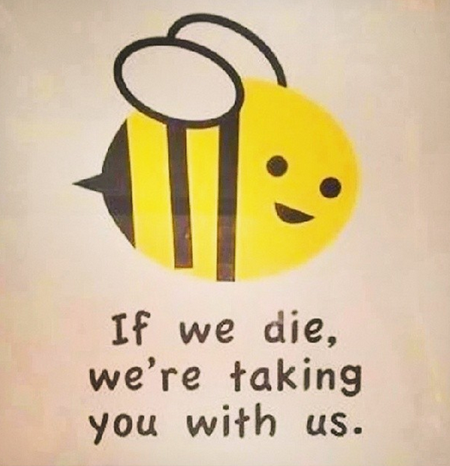
Basically, if honey bees disappear, they could take most of our insect pollinated plants with them, potentially reducing mankind to little more than a water diet.
This is why my husband and I decided to take an all day class on beekeeping… and to purchase a hive and a package of bees for our yard.
We purchased a 3 pound package of bees, which is about the equivalent of 10-12,000 bees. This small group of girls (and a few guys) can grow in size to around 50-60,000 thanks to one queen bee.

Our package was buzzing with activity. We even had a few hitch hikers on the outisde that wanted to see what all the excitement was about.

The bees are shipped with a tin can of sugar water for them to eat/drink during their journey. The queen bee is in her own little box suspended from the top of the box by a clip/wire hanger.
The queen is shipped this way for her protection, as more often than not the rest of the bees do not “know” her. It takes several days in the box for the rest of the bees to get used to her scent and accept her as their queen.
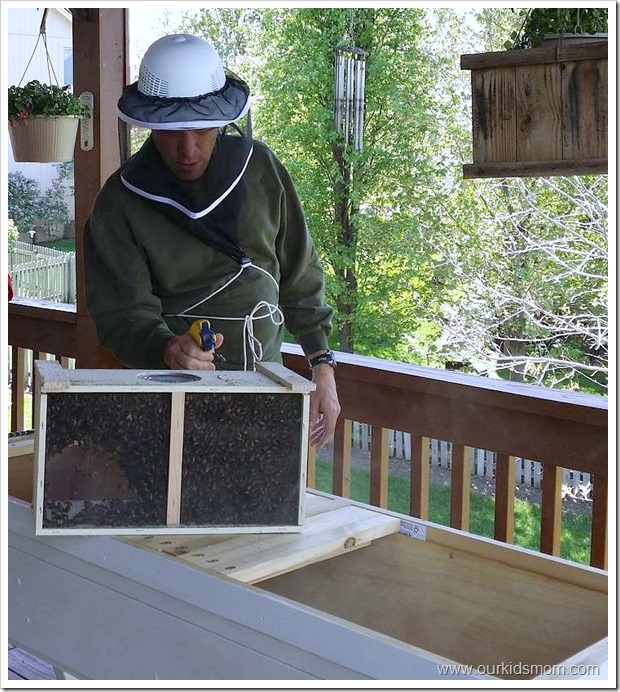
Before working with the box, my husband sprayed the bees with a 50/50 mixture of sugar and water to distract them. They should be busy grooming each other and not really mind the next process.
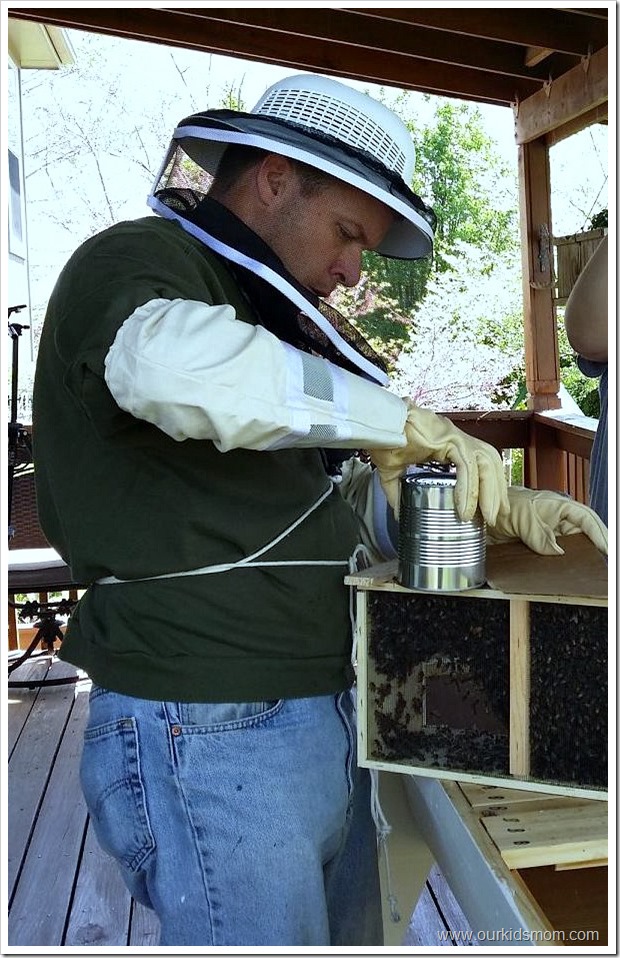
After carefully removing the can of sugar water, we placed a piece of cardboard over the opening so that the bees would not fly off.
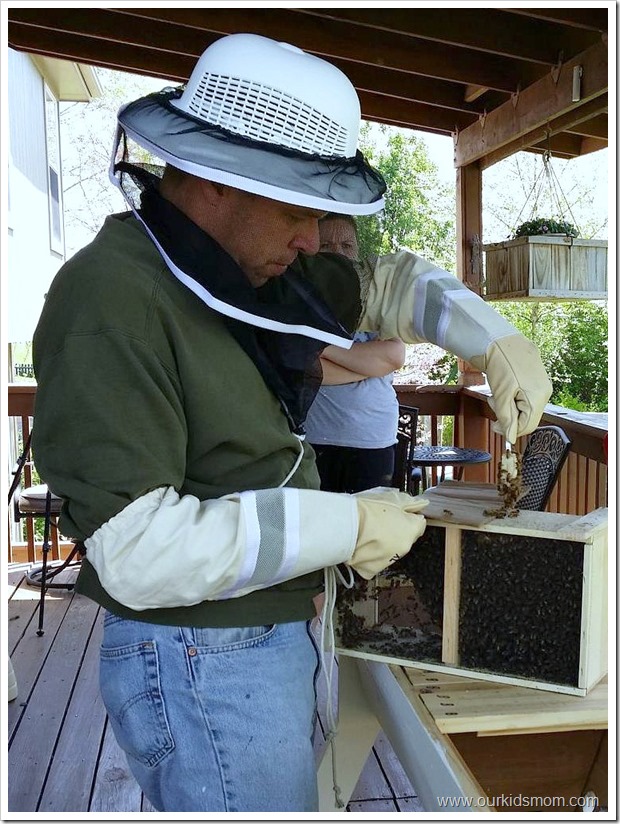
The next step is to carefully slide the queen’s cage out of the box and hang it from one of the bars in the hive.
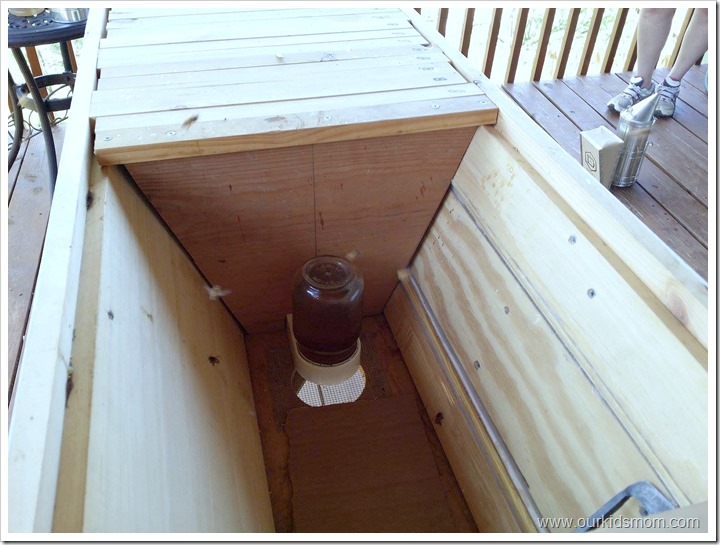
We have our hive divided into two sections as it is rather long. On the unused side we have the sugar/water mixture in a feeder that slides though a cut in the wall.
When you first install your bees they will be busy making comb. It is important to feed them daily while they get over this hurdle. Our bees have been emptying this jar in about 24 hours.

We chose a gentle install where we placed the box directly into the hive for the bees to escape on their own.

Here is a shot from the window side of our hive of the queen hanging from a bar. The nurse bees will attend to her (feed her) through their mesh as usual while the rest of the group continues to acclimate to her.

Above you can see the bees slowly coming out of the box and the queen hanging from her box next to it.

Most of the bees tend to clump around the queen. This was the beginning of this process.


After checking on the bees we noticed that many were clumping inside the box closest to the queen. The outside clump had grown large enough there really wasn’t room for them. So, we decided it was time to remove the shipping box.

We placed it gently on the ground and allowed the bees to exit.

In the meantime many of the other girls were already at the door fanning to circulate the air. Most of the bees in the picture with their backs to us are fanning… you can tell because you can’t see their wings in the picture.

We are trying hard to teach our children and their friends that honey bees are not aggressive and would rather not sting if it can be avoided. I encouraged this girl to sit for a minute by putting sugar water on my finger and gently scooping her front the front as she ate.
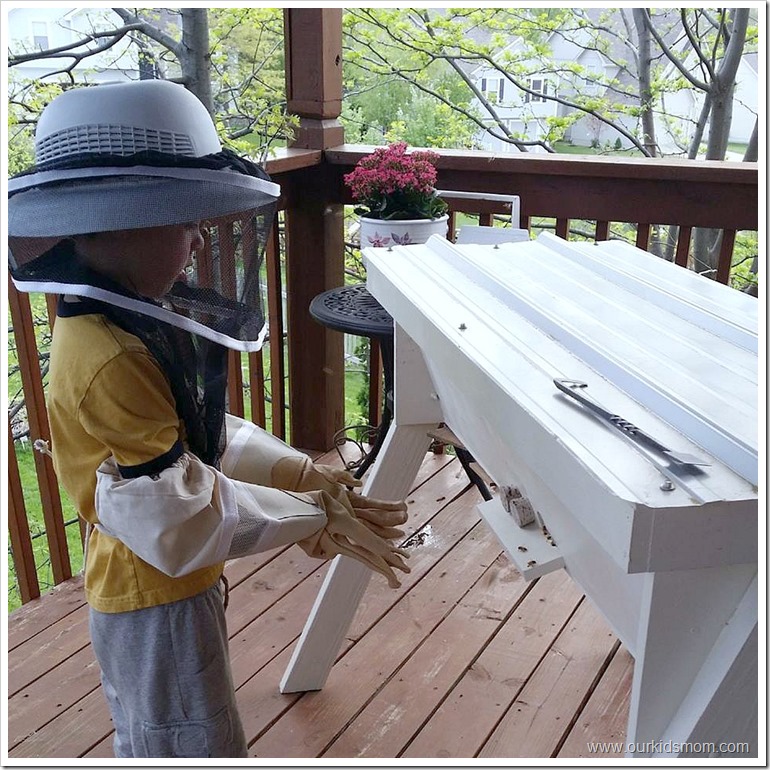
My Ethan has already fallen in love with the bees. The photo above is the first day we had the bees. He was waiting patiently at the door for one to land on him. He has since abandoned the gloves and held them bare handed like I do.
Want to learn a little more about bees? Check out 10 Facts About Honey Bees!
Below is a video I made of the installation process.
I hope it helps future beekeepers get an idea of how to install their bees as well as give others an idea of how gentle and easy to work with these amazing little creatures are!
Be sure to check back for my next post and read about a HUGE mistake we made that almost meant disaster!






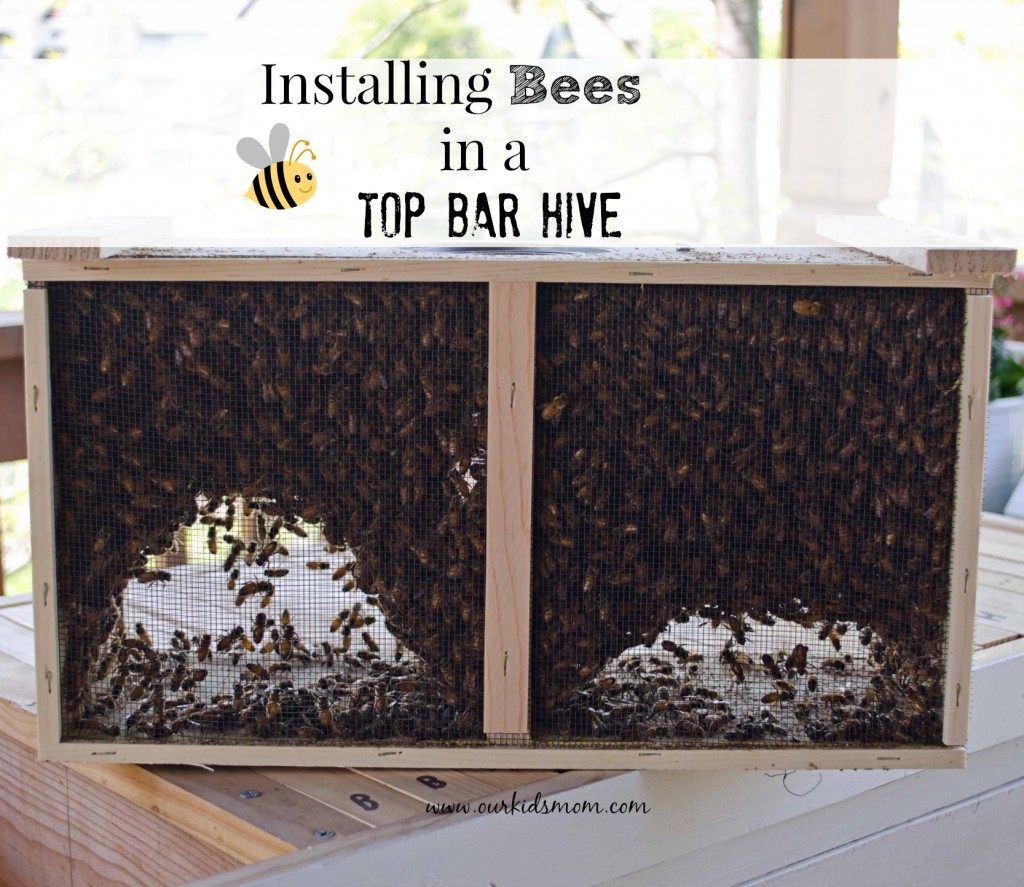










This is incredible! My husband and I were just talking about the hive collapse problem the other day. I don’t know if we would like to have hie though. I have to say I am not a huge fan of bees for the most part. I can’t believe your son was so brave.
That’s so amazing! I can’t wait to follow along on this adventure!
that looks pretty scary. i am not sure i could do it. i don’t know how the kids are doing it. i would be freaking out and shaking so much. i know we need the bees for a lot, but still!!??
I’ve been reading up on the decline in Honey Bees over the past few years and what that means to our food sources and planet overall and it’s quite scary. Glad you and your family have taken an interest. Maybe one day when my husband is home for good from his job out of state we can get started on a similar project. Thanks for sharing all of these amazing photos.
Wow! amazing pictures! So awesome you guys did this, make a difference! And to include the kids in the learning process is beyond exceptional! Great job!
Good for you! I am well aware of how important bees are to our planet, but I am not sure I could ever keep them myself. I like to think I do my share by not using pesticides on plants around our home.
That was very interesting & so well put together!
Hi! I am new to bees and am starting a top bar hive in the KC area. Where have you found classes and/or groups of support for beekeeping?
Hi Callie! Check out the Kansas City Beekeepers Facebook page for support and locations of meetings. Good luck and enjoy!